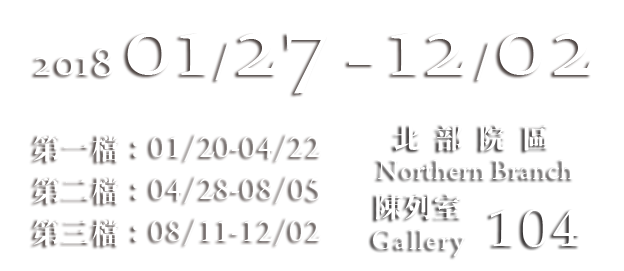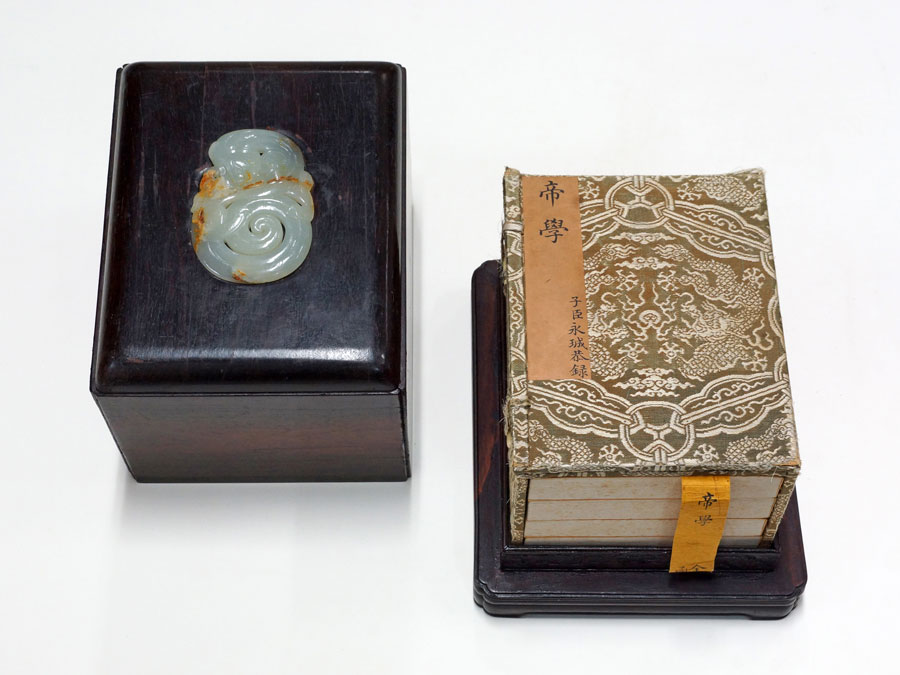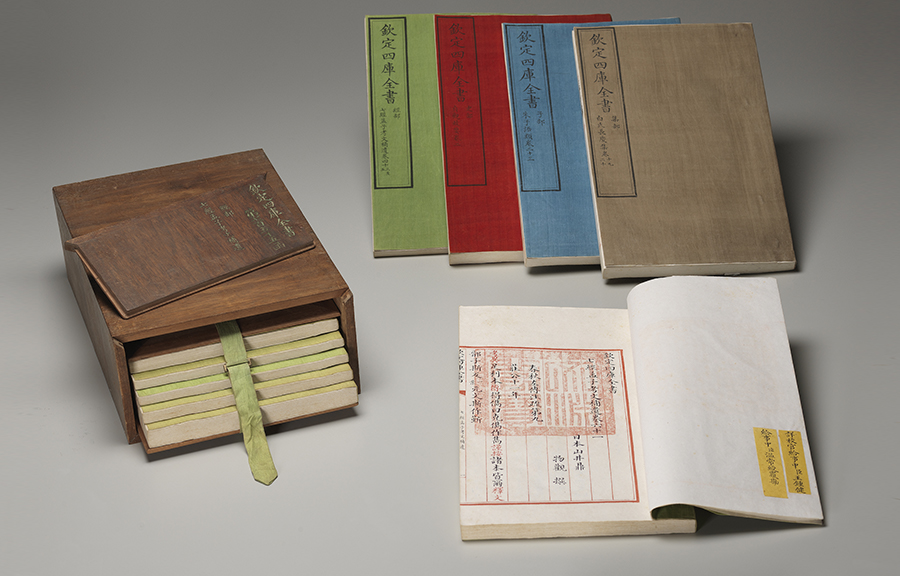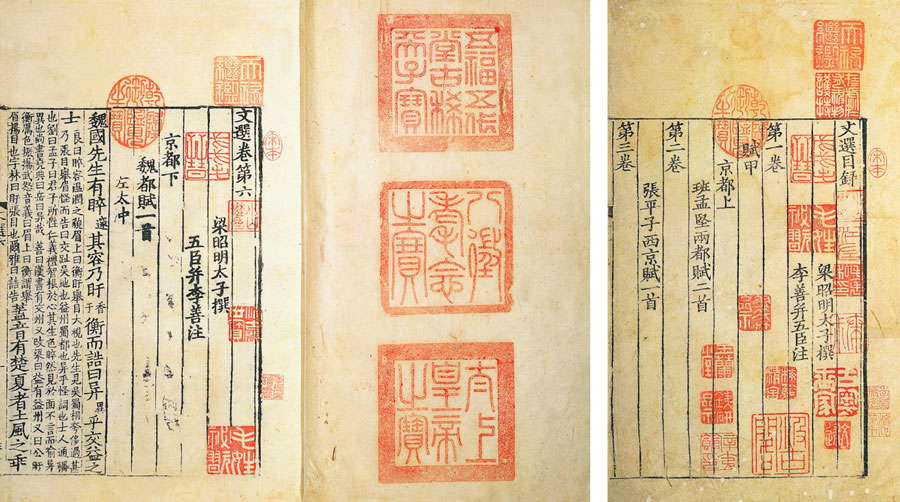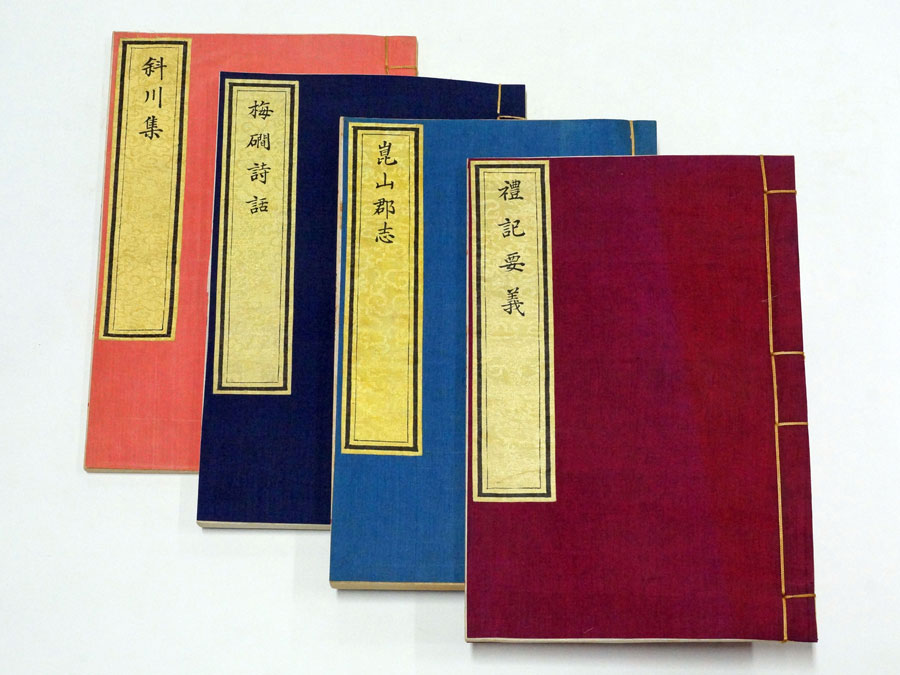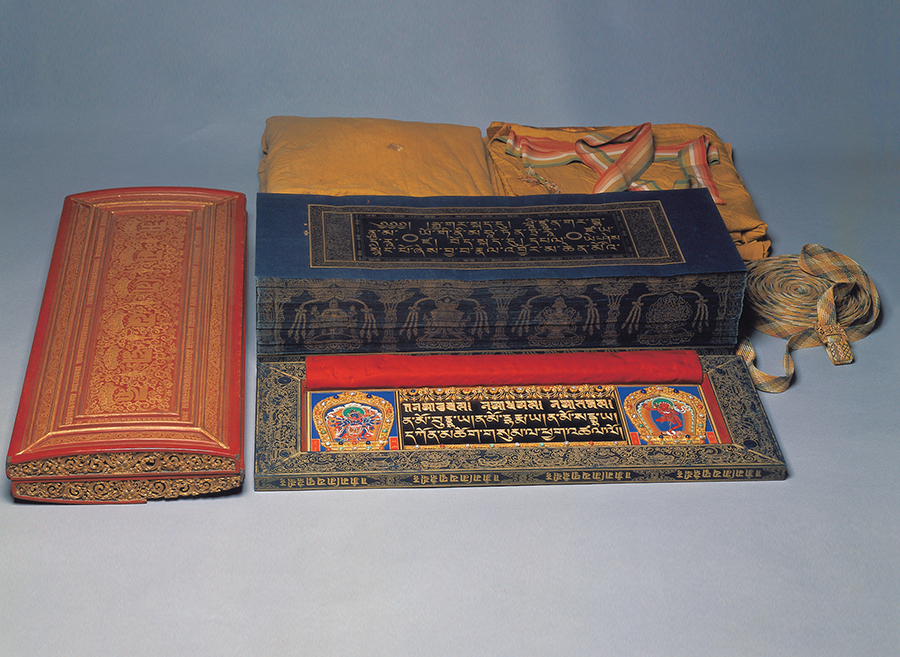The rare and antiquarian books in the National Palace Museum's collection are for the most part inherited from the Qing court collection. These books were originally housed in various palaces and pavilions in both the inner and outer courts. Wuying Palace, situated in the outer court, housed the office in charge of producing court-commissioned books, while Wenyuan Pavilion was the majestic imperial library. The inner court contained the living quarters of the emperors and his consorts, and several parts of it, such as the Yangxin Hall, the Zhaoren Hall, and the Cining Palace, also housed books often read or otherwise favored by emperors and other members of the imperial household.
What books did Qing dynasty emperors read? What books could be found in the palaces and pavilions? This section comprises five segments, "Gems of the Wuying Palace Editions," "Treasures of the Wenyuan Pavilion," "The Tianlu Linlang Library of Rare Books," "Fine Editions of the Wanwei Biecang Library," and "The Kangxi Kangyur." The books and interpretative texts on display reveal how the Qing dynasty emperors directed their court libraries, unfolding the value they placed on scholarship and their ambition to promote erudition.
Gems of the Wuying Palace Editions
Wuying Palace, completed in the 18th year of the Yongle reign in the Ming dynasty (1420), was originally the office where the emperor dealt with political affairs. In the 19th year of the Kangxi era in the Qing dynasty (1680), the Qing court set up a workshop here for craft production; it also had a book printing, binding, and decoration operation. In the 7th year of the Yongzheng reign (1729), the imperial workshop at the Wuying Palace was renamed the Printing Office, and from then on, Wuying Palace became a "state publishing house" in charge of producing court-commissioned books.
During the Qing dynasty there started to appear "imperially endorsed" and "imperially commissioned" books compiled by ministers under imperial instruction, and these official publications were intended to promote the emperor's own will or to extend his political and cultural influence. The books produced by Wuying Palace later became known as the "palace editions (Dianben)." Rich in content, they were meticulously edited and proofread; the typefaces, paper, ink, and binding materials were all carefully selected in order to create elegantly and richly decorated appearance. In the 38th year of the Qianlong reign (1773), Jin Jian (?–1794), a deputy official supervising the compilation of the Complete Library of the Four Treasuries (Siku Quanshu), proposed the reprint of certain rare books using wooden movable type. The proposal was approved by the emperor, who gave the movable type the name "collected gems (Juzhen)." In total, 134 titles were printed with wooden movable type at the Wuying Palace, and these books, together with the four collections of books that had previously been printed with blocks, became known as the Collected Gems Editions of the Wuying Palace (Wuyingdian Juzhenban Congshu) and formed an important part of the Qing court palace editions.
Treasures of the Wenyuan Pavilion
Construction of the Wenyuan Pavilion started during the Ming emperor Yongle's reign. Until it was burned down in the late Ming dynasty, the pavilion was the imperial library. In the 39th year of the Qianlong era (1774), the Qing emperor ordered the Wenyuan Pavilion to be rebuilt on the southeastern side of the outer court of the Forbidden City. The reason for the two-year reconstruction was to house the majestic Complete Library of the Four Treasuries.
The project of creating this massive collection started in the 37th year of the Qianlong reign (1772), when Zhu Yun (1729–1781), the Education Commissioner of Anhui, proposed collating the books in the Ming dynasty Yongle Encyclopedia (Yongle Dadian) that might have been scattered or lost, and so Qianlong ordered the provinces to acquire and submit a variety of books. In the following year (1773), the emperor established the Siku Quanshu Office and put Grand Secretary Yu Minzhong (1714–1779) in charge of the massive compilation project. The Siku Quanshu is divided into four parts, Jing (Chinese classic texts), Shi (Chinese histories and geographies), Zi (Chinese philosophy), and Ji (anthologies from Chinese literature), covering more than 3,400 titles from successive dynasties. In order to house this massive collection, Qianlong ordered Yin Zhu (n.d.), Commissioner of Imperial Textiles in Hangzhou, to study the architectural layout of the renowned private library of Tianyi Hall in Ningbo, Zhejiang, and to model Wenyuan Pavilion on it. The first series of the Siku Quanshu, completed towards the end of the 46th year of the Qianlong reign (1782), was deposited in the Wenyuan Pavilion. The complete Siku Quanshu collection comprises 36,381 volumes in 6,144 cases. Its refined brushwork, meticulous editing, and elegant binding and decoration make it the most celebrated collection of rare books in the National Palace Museum.
The Tianlu Linlang Library of Rare Books
The Tianlu Linlang Library was a collection of rare books assembled by the Qianlong emperor. Comprising titles from the Song, Yuan, and Ming dynasties, it was preserved in the library at the Zhaoren Hall (originally the Kangxi emperor's study). Emperor Qianlong turned the hall into a library housing rare books as a way to commemorate his grandfather and named it after the Han dynasty Tianlu Pavilion, China's first imperial library. In the 40th year of the Qianlong reign (1775), the emperor commissioned Grand Secretary Yu Minzhong to head a project to compile the Catalogue of the Tianlu Linlang Library (Tianlu Linlang Shumu), a bibliography of the books collected. About twenty years later, in the 2nd year of the Jiaqing era (1797), a fire destroyed the Zhaoren Hall and its entire store of rare books. The Jiaqing emperor was eager to restore the library and commissioned Grand Secretary Peng Yuanrui (1731–1803) to once again assemble books and compile a bibliography which became known as the Supplement to the Catalogue of the Tianlu Linlang Library (Tianlu Linlang Shumu Houbian). Almost all the titles of the Tianlu Linlang Library in the National Palace Museum's holdings come from the collection reassembled during the Jiaqing reign.
Fine Editions of the Wanwei Biecang Library
The term "Wanwei Biecang Library" refers to the books presented to the Jiaqing emperor in three installments by Ruan Yuan (1764–1849), the Educational Commissioner of Zhejiang. The library of books collected in the southeast would serve as preparatory work for the further compilation of the Siku Quanshu. The books were housed in the Yangxin Hall, and the library was named Separate Collection of Mount Wanwei (Wanwei Biecang) by the Jiaqing emperor after the story of Yu the Great scaling Mount Wanwei and discovering precious books.
As Ruan Yuan's ambition was to expand on the basis of the Qianlong-era cultural enterprise the Siku Quanshu, most of the titles collected in the Wanwei Biecang Library had not been entered into the Complete Library of the Four Treasuries. In addition to assembling the original books, Ruan Yuan also had the books transcribed and personally wrote their abstracts. The Jiaqing emperor then ordered the compilation of bibliographies for the library, thus were born the Annotations to the Catalogue of the Wanwei Biecang Library (Wanwei Biecang Zongmu Tiyao) and the Annotations to the Supplemental Catalog of the Wanwei Biecang Library (Wanwei Biecang Xubian Shumu Tiyao). The library contained a total of over 170 titles divided into the same four categories as the Siku Quanshu: Jing, Shi, Zi, and Ji. The books were preserved in wooden cases, and the seal mark "Treasure of Emperor Jiaqing" could be seen on the frontispiece of every book, indicating the emperor's appreciation of this library. When the Qing court was toppled, the Republican government's Committee for the Disposition of the Qing Imperial Possessions took inventory of the objects in the Forbidden City and found only 160 titles in the Wanwei Biecang Library.
The Kangxi Kangyur
The Tibetan Dragon Canon (Zangwen Longzangjing), or simply the Kangxi Kangyur is a Tibetan-script translation of Buddhist canon consisting of sūtras and monastic codes (the word kangyur means literally "the translation of the Buddha's words"). The compilation was commissioned by the Grand Empress Dowager Xiaozhuang, grandmother of Emperor Kangxi.
Volume 24 of the Pearl Forest of the Secret Hall (Midian Zhulin Chubian) contains the following descriptive entry: "The Grand Empress Dowager commanded the compilation of a set of the Tibetan Buddhist canon to be transcribed in the script of the West Region in gold ink on indigo blue stationery with inlaid jewels. Totaling 108 volumes, the collection contains all teachings orally transmitted by Śākyamuni." The Kangxi Kangyur, originally housed in the Xianruoguan of the Cining Palace, contains over 50,000 leaves of manuscript. This voluminous collection is divided into six parts: Rgyud (esoteric teachings), Sher phyin (perfection of wisdom), Dkon brtsegs (collected Mahāyāna sūtras), Phal chen (the Sūtra of the Ornament of the Buddhas), Mdo (collected sūtras), and Vdul ba (monastic codes). It is written in elegant Tibetan script saturated gold ink on specially made cobalt-blue stationery. The front and back sūtra boards are decorated with 756 polychrome painted Buddhist images and inlaid with jewelry, covered by protective sūtra screens embroidered in five colors - red, blue, green, white, and yellow. A piece of khata silk is placed above the wrapped manuscript, which is covered by yellow sūtra cloths in plain silk, cotton, and embroidered silk and tied with seven-colored sūtra ropes. The whole is protected by outer sūtra boards, bound with five-colored binding ropes, and covered with yellow quilting. Majestically and extravagantly decorated, the Kangxi Kangyur is the crown jewel of the Buddhist canon collections in the National Palace Museum.
